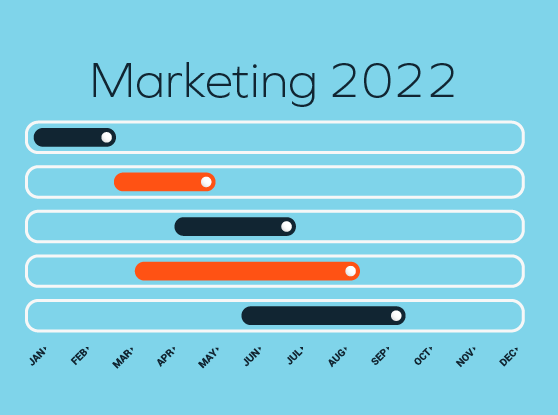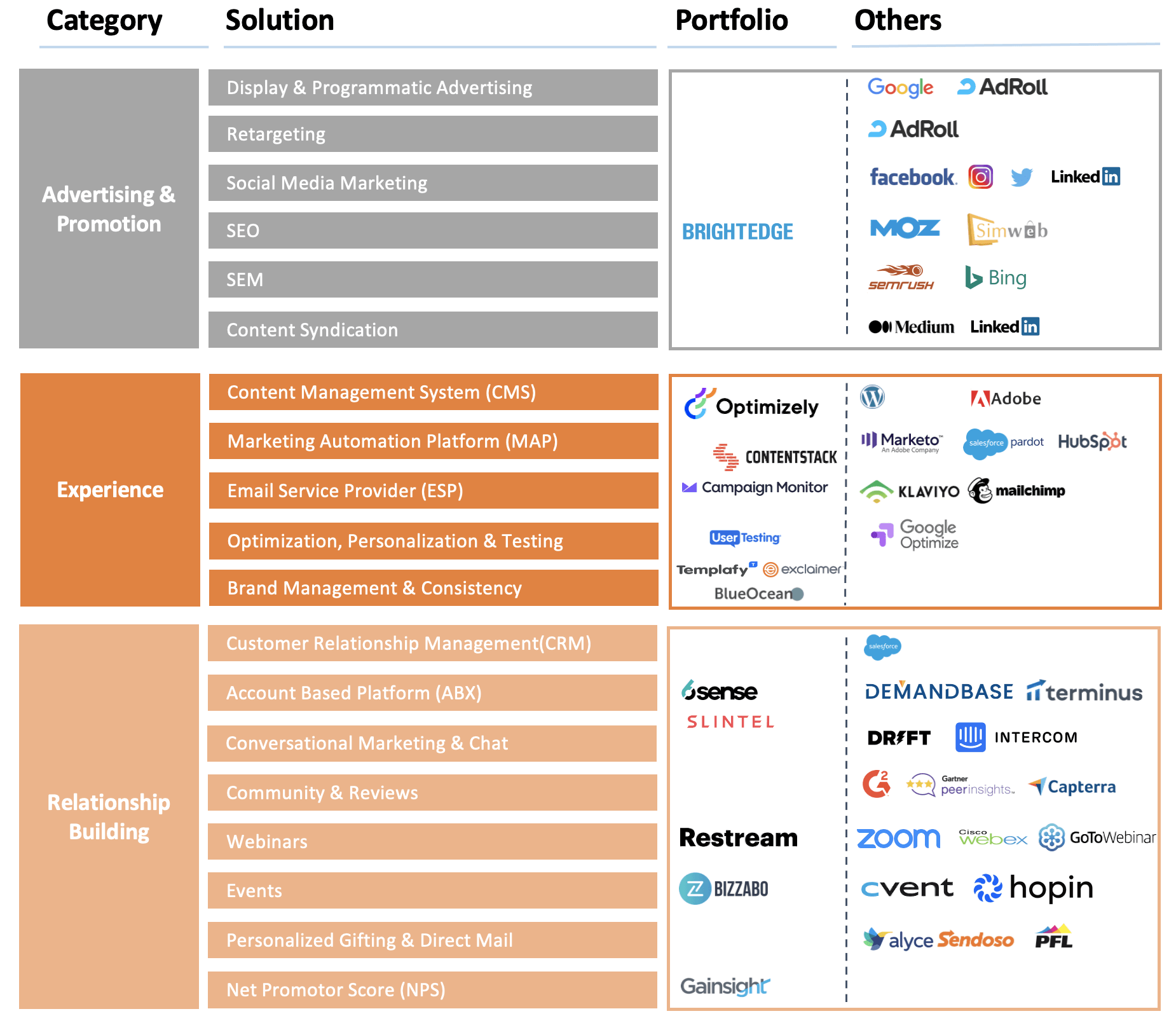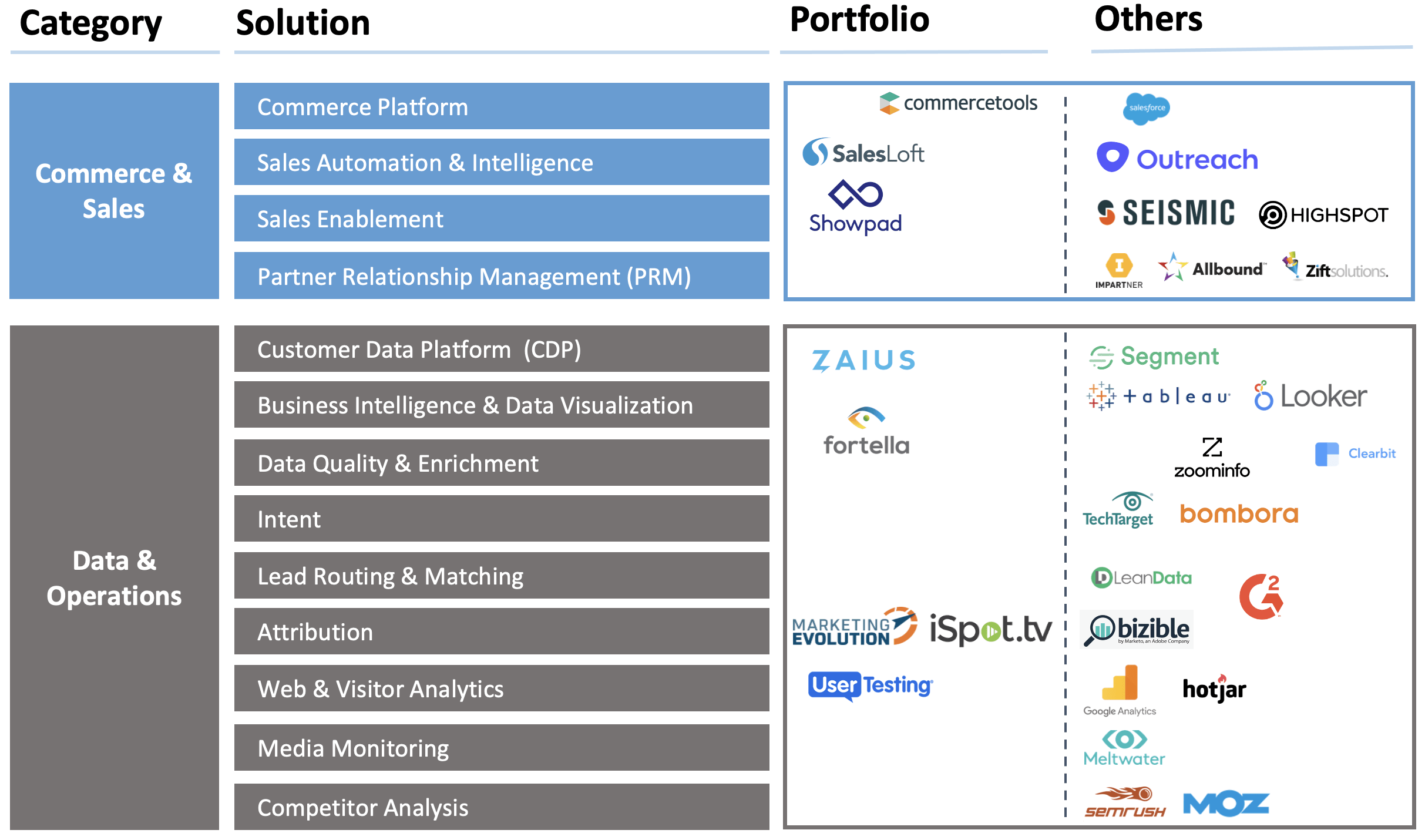The Marketing Leaders’ Guide to What is Next in 2022

As the dust settles on a turbulent two years where many best practices have been challenged, marketers are ready to tackle their plans for 2022. PLG may be 2021’s vogue, but marketers know that every year is MLG (whether your ScaleUp wins via a product-led or sales-led growth motion, marketing-led growth is the underpinning). Based on our discussions with leaders across Insight’s portfolio of high growth ScaleUps companies, we observed that planning focused on four essential areas of impact that will define marketing success in the coming year. Is your organization ready for what is next?
People
It’s no secret that this is one of the most competitive hiring markets in recent times. Changes to how we work and shifts in employee priorities mean that the global talent pool is constrained and presents new challenges in scaling a marketing organization.
The Great Resignation presents its own unique issues with retention and hiring alike. It requires marketers to think holistically about team building. With an average salary increase of ~3.6% nationally we can expect people's spend allocation to continue to grow in parallel with record inflation.
Specialized, or high-impact evolving roles, like Product Marketing, Demand Gen, and Marketing Ops, remain difficult to fill and require out-of-the-box thinking to find candidates that possess the much needed marriage of technical competence and commercial acumen (for example, expanding a PMM search into Product Managers with deep domain expertise).
On the retention side, marketing leaders must refocus on how to engage their teams in new ways. Hybrid teams demand connection, transparency, and clarity. One of the core challenges posed by the new hybrid reality is providing all employees with clear visibility on the impact of their work and the direction of the organization. Gtmhub, a Results Orchestration System and Insight portfolio company, provides some important learnings on how clear communication of mission and goals can counteract the trends of disengagement.
Power Tips
- Look to third party temporary talent marketplaces like Upwork to act as a stopgap in the short to medium term. This can provide the expertise and execution capacity that your business needs badly to meet your growth targets – even as you continue what can be a long recruitment process.
- Allow employees to declare “majors” and “minors” of domain expertise and ownership. This approach will enable your key contributors to grow technical and industry knowledge, becoming experts, in areas of value for the business. This form of competency will drive connection to teams and the organization by creating a culture of respect for recognized skills.
- One of the benefits of hybrid is that everyone doesn’t need to be in the same office. Remote work provides a desired work-life balance for many. Many locations are new meccas for tech and are new great hunting grounds for marketing talent, including New York, Miami, Atlanta, and Austin.
Tactics and Strategies
The last two years have been challenging for every organization. Demand for software is stronger than ever. Although, so is competition.
Delivering growth goals has been accomplished by bringing creativity back to marketing. New tactics, strategies, and out-of-the-box thinking has kept things fresh, even as so much has changed with a business’ go-to-market capabilities.
Insight ScaleUp companies focus on accelerating growth. Well-worn acquisition channels that drive growth during the early growth stage usually need to give way to a more sophisticated and diverse marketing mix as your organization matures and expands its reach into adjacent personas or markets.
Insight’s Marketing Center of Excellence Demand Gen Survey shows that “table stakes” tactics of direct and organic search, paid search, digital, and virtual/in-person events drive 83% of the marketing sourced pipeline. The question is where to diversify your tactical mix beyond table stakes? According to our portfolio companies, the top tactics that they are planning to test next year are customer referral programs, community development, direct mail, podcasts, ABX, and partner marketing.
So much changed in marketing during the COVID-age. The new normal includes hybrid events, scalable influencer marketing, ABX powered by double-funnel measurement, and creating a PLG flywheel. These all represent areas that modern marketing organizations should be considering.
COVID remains an unknown in terms of how it will impact marketing and demand. As marketers, you’ll need to plan for all possibilities and be prepared to remain agile in your mix of strategies and tactics. The ability to align thought leadership, SEO, PR, and all elements of your content strategy will enable you to scope out a strong market position. Thinking holistically and in an integrated manner about how you talk about the business, your mission, and your values require an investment in a strong point of view and scalable messaging and positioning.
Power Tips:
- Be it a reinforcement of customer marketing through a community program, amplifying awareness for your brand and point of view through an effective Analyst Relations program, or giving a voice to customer needs through a customer listening strategy, now is the time to explore new growth levers and map out priorities, anti-priorities, and nice-to-haves.
- Events are going to continue to be a challenge going into 2022. No one knows when we are going back to “normal,” so assume we won’t. Our recommendation has been for event budgets to be up to one-third larger than 2019 to enable the organization to create events that have live, virtual, and hybrid components. Remember, don’t let virtual events mean more webinars…you are better than that!
Spend
One of the most common questions that marketers ask us is what the “right” budget allocation should be. Naturally, there is no right answer as each company and market presents bespoke factors that determine success. However, over the years, Insight’s Marketing COE’s Marketing Spend benchmarks have provided the needed reality check to align with your appropriate cohorts.
While we don’t typically see huge swings in spend benchmarks year to year, COVID was an exception. Be on the lookout for our updated benchmarks reflecting changes in spending since COVID. As a preview, a few key takeaways to consider for planning:
- We saw earlier stage companies (i.e., <$10M revenue) pull back on program spend during COVID. In part, this was the variable spend they could pull back on. Another reason is that these companies are historically more reliant on in-person events with less sophisticated demand gen engines. This made it harder for them to shift strategies to digital. Smaller organizations saw program spending drop from 57% to 52% of marketing spending.
- For larger companies with greater than $50M in revenue, program spending actually increased from 46% to 49% due to their more sophisticated digital demand gen engines.
- Marketing spend efficiency initially took a hit during COVID driven by a slowdown in new business ARR. Pre-COVID would typically cost $0.46 in marketing spend for each dollar of new business ARR. This jumped to $0.59 during COVID.
- Marketing played a larger role in driving new business pipeline, especially for companies that sell to enterprise buyers given that the Sales teams were grounded and transitioning to digital selling.
2022 will be a year in continued transition. We expect some return to prior spend patterns, but a lot of remaining COVID overhang. In the coming year, the key will be to remain agile in your spending. You will need to keep enough dry powder to take advantage of opportunities as they present themselves. A renewed dedication to spend measurement and efficiency will be a critical component of all high-performing marketing teams.
Power Tips
- While using top-down benchmarks is a great way to gut-check spend levels, we always recommend creating a granular, by channel, bottoms-up model as well.
- As in-person events return, we expect to see a gradual emergence to pre-COVID levels of event activity. Costs will be higher due to inflation and the need to provide hybrid experiences.
- The price of everything has increased during COVID. Don’t rely upon old benchmarks that may encourage you to plan at unrealistic levels.
- A good starting point for your 2022 planning comes from portfolio company Florence Healthcare’s Blake Adams who takes a four-step approach.
- Identify and cut inefficient spend from 2021.
- Allocate 60% of spend to predictable scalable growth centers.
- Put 30% of your budget into reinforcing your USP in market.
- Save 10% to remain flexible as opportunities arise during the year.
Technology
The MarTech landscape is littered with over 5,000 solutions. Marketers have been known to chase the next, shiny marketing object that promises to solve all performance challenges. In today’s erratic environment, it is time we recognize that there is much more to creating a high achieving MarTech stack.
MarTech stacks continue to expand as new must-have additions creep into our annual budgets. Thinking holistically about how your tools talk to each other is crucial in building a single cohesive suite rather than a mass of siloed point solutions. Every addition should make your existing stack better, rather than more complicated
68% of Insight portfolio companies report having data hygiene issues. Remember your reporting and analytics are only as good as the quality of your data—junk in = junk out. Invest in marketing ops and the tools to deliver strong end-to-end data quality.
Ensure that you have the right foundational tech for the maturity of your marketing (MAP, CRM, CMS, + website optimization tools, conversion software, SEO tools, etc.). Which of these have you outgrown? Insight Onsite’s Reference MarTech Stack includes many of the incredible companies we’ve invested in across the spectrum of marketing capabilities.


Power Tips
- Explore how Web 3.0 can drive new customer acquisition strategies like decentralized content creation, incentivized referrals, and community-led growth tools (e.g. Collab.land and SourceCred).
- Map your Martech spend to your strategic initiatives. Are you driving an ABX strategy? Will you need an ABX Platform like 6Sense to scale it? Have you included the funds in your budget to support this spend?
- If you aren’t thinking hybrid events in 2022, where have you been? Some of your target customers will attend events live and some virtually, you need to hit them both. Invest in the Event OS™ from best-in-class portfolio company Bizzabo.
- A multitude of external forces continues to pose challenges in day-to-day marketing operations. From evolving data protection legislation to M&A volatility to major technology shifts (e.g., iOS 15, last click attribution, death of the cookie), it is incumbent upon marketers to be forward thinking and build defenses into their marketing strategy.
As we close out 2021 and begin to look toward the New Year, marketers should be proud of all that they were able to achieve during these exceptional times. But now is not the time to take your foot off the gas pedal. It will take all your substantial capabilities and creativity to manage what is sure to be another year of ups and downs. Your focus on these four key areas are the essential elements of your plan for success. Here’s to a bright and bold 2021!









